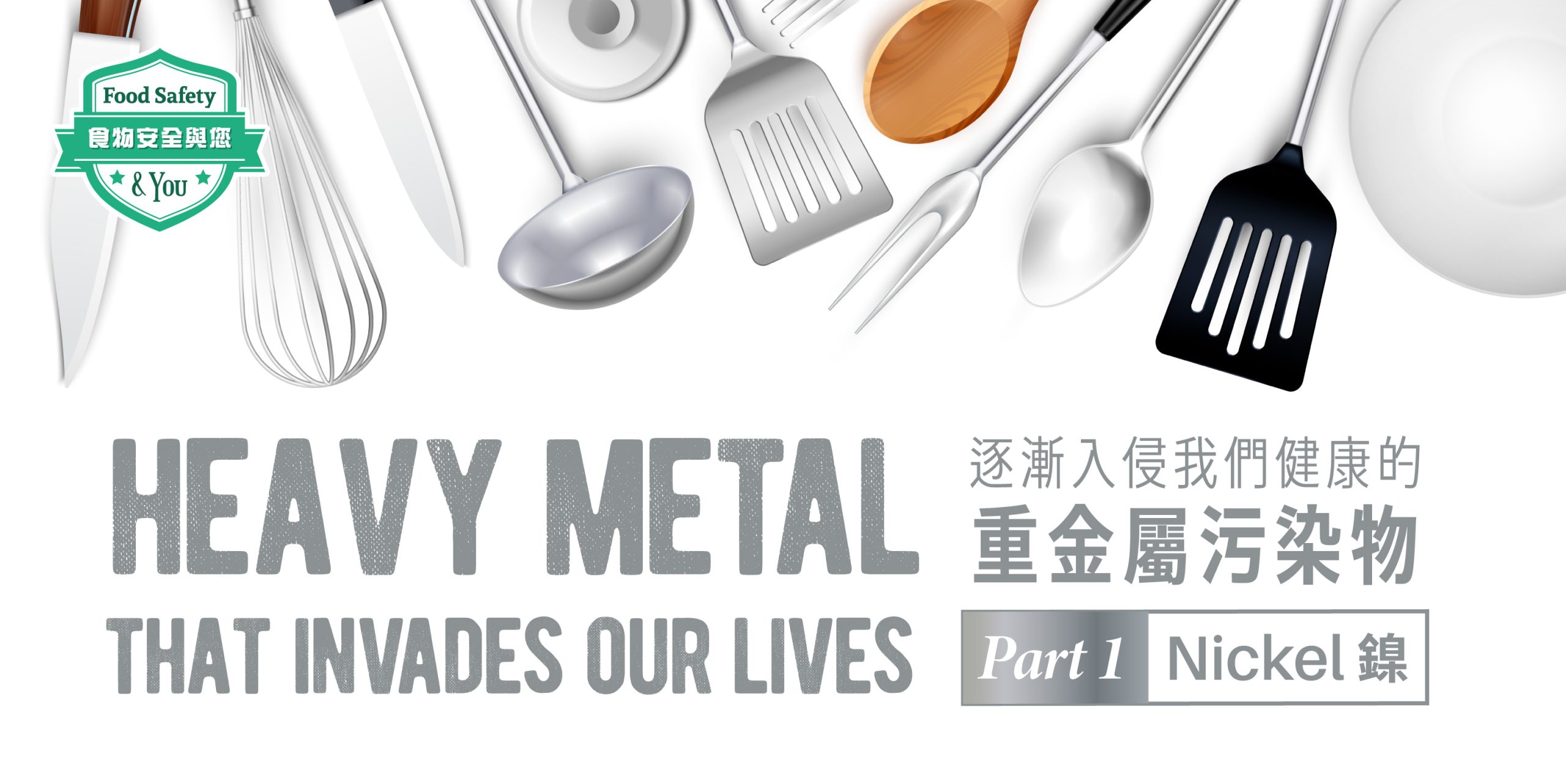[Food Safety & You] Heavy Metal that invades our lives (Part 1)

If you stop and look around, you may be surprised by how metals have become everywhere in our daily lives – Cookware, beverages container, reusable lunch box and so on. Other than these “visible” metals, chances are you have also been exposing to some “invisible” metals unknowingly on a daily basis – the metallic contaminants in the drinking water, seafood, cooking utensil, staple foods, etc. In long-term exposure, metallic contaminants may lead to various adverse health effects that we shall not underestimate. In this article of “Food Safety & You”, we would discuss a few metallic contaminants and provide corresponding tips to minimize the exposure and intake.

What is metallic contaminants?
Not all metals are created equal in terms of the effect on health!
Metals like copper, zinc and selenium are essential trace minerals and micronutrients to sustain our health, but some other metals like nickel, lead, arsenic and mercury are of no functional benefits BUT adverse health effects to our body. These harmful metals creep into our lives due to industrial effluent disposal of metal-containing wastewater. Discharging wastewater with heavy metals into the environment subsequently contaminate aquatic life and agricultural crops, which are parts of the food chain. While these metallic contaminants might not necessarily cause acute toxicity, they could accumulate in our body and cause harm in long term when ingested.
Metallic Contaminant – NICKEL
Being a very abundant natural element, nickel is mostly used to produce stainless steel and other alloys (by combining with other metals such as iron, copper, chromium and zinc). Stainless and Nickel-containing alloys account for more than 85% of domestic consumption in the United States (USGS, Mineral Commodity Summaries). Nickel is released into the environment by industrial activities from the making of nickel/nickel-alloys, oil/ coal burning and trash incineration.

What it does to the body?
According to International Agency for Research on Cancer (IARC), metallic/elemental nickel is Class 2B Carcinogen, meaning that it is possibly carcinogenic to human. If inhaled as nickel compounds, it is classified as Group 1 Carcinogen instead (carcinogenic to humans). It was found that workers breathed dust containing high levels of nickel compounds while working in nickel refineries and process plants have cancers of the lung and nasal sinus.
Besides its carcinogenicity, nickel is also a common allergen and is a powerful sensitizer metal (PMID: 24987632). Some people develop vesicular type of hand eczema following the ingestion of nickel in diet (PMID: 23723488). Presence of sufficient amounts of nickel in the diet of a nickel-sensitive person can provoke dermatitis. Research observed that a single and high dose of nickel sulfate by oral administration may provoke hand eczema (PMID: 23723488) and evidence showed that improvement of dermatitis was observed on a low nickel diet (PMID: 629873).
What is the main dietary source of exposure of nickel?
Stainless steel cookware can be an overlooked source of Nickel:
Most nickel is used to make stainless steel. According to research, nickel was found to have increased 26-fold in a simulated cooking process. Cooking duration longer than 6 hours resulted in additional increase in metal leaching where Nickel concentrations increased 34-fold. Metal leaching decreased with sequential cooking cycles but significant metal contributions to foods were still observed. Cooking with new stainless steel resulted in the largest increases (PMID:1514841, 23984718).Nickel in orthodontic appliances, a source you did not think of:

Current evidence suggests that most common allergic reaction reported in orthodontics is related to nickel in orthodontic appliances (PMID: 24987632). It was found that patients with orthodontic appliances had significantly higher content of nickel in the dental plaque and saliva compared with non-orthodontic patients (PMID: 16415086)
Nickel from foods:
According to the study by the Centre for Food Safety, the below foods are of high nickel contents:
| Food Group | Mean Nickel Contents (µg/kg) |
| Peanut | 5300 |
| Peanut butter | 3800 |
| Legumes, nuts, seeds | 1800 |
| Chocolate | 1400 |
| Fermented bean products | 890 |
| Sugars and confectionery | 700 |
| Snack foods | 260 |
| Condiments, sauces, herbs | 170 |
| Cereals & Fruits | 120 |
| Vegetables | 91 |
| Mixed dishes | 89 |
| Non-alcoholic beverages | 83 |
How to reduce Nickel exposure?
1. Magnet! Test the stainless steel simply using a refrigerator magnet.
Not all stainless steel cookware contain nickel. Stainless steel made with almost none nickel are strongly magnetic while stainless steel containing nickel are very weakly magnetic or not magnetic. Stainless steel is one of the most underrated source of nickel exposure as many people have been using stainless steel cookware frequently and almost every day.
2. Minimize foods with high nickel content:
Some foods are high in nickel irrespective of the soil nickel content: Chocolate/cocoa, soya beans and soy products, oat, nuts, almonds, millet, rye, fresh and dried legumes – red kidney beans, peas, lentils, peanut, chickpeas (PMID: 6395539, 23723488)
3. Eat wisely
Meat, poultry, eggs and dairy products (milk and cheese) contain less nickel compared to plant in general except for a few fishes with high nickel content – tuna, herring, salmon and mackerel. Fruits and vegetables like citrus fruits, mushroom, potato, cabbage and cucumber are safer choices while garlic, onion, leafy vegetables, and banana are to be used in moderation in order to achieve a diet with less nickel. (PMID: 23723488)
4. Drink wisely
Orange juice, tea, coffee and milk were found to inhibit nickel absorption in human (PMID: 23723488, 9280182).

Ref: Agency for Toxic Substance and Disease Registry, Centre for Food Safety, Department of Health, FDA, International Agency for Research on Cancer , PMID: 23723488, 1514841, 23984718, 24987632, 16415086, 629873, 6395539, 23723488, 9280182, 26109881, United States Geological Survery, World Health Organization

